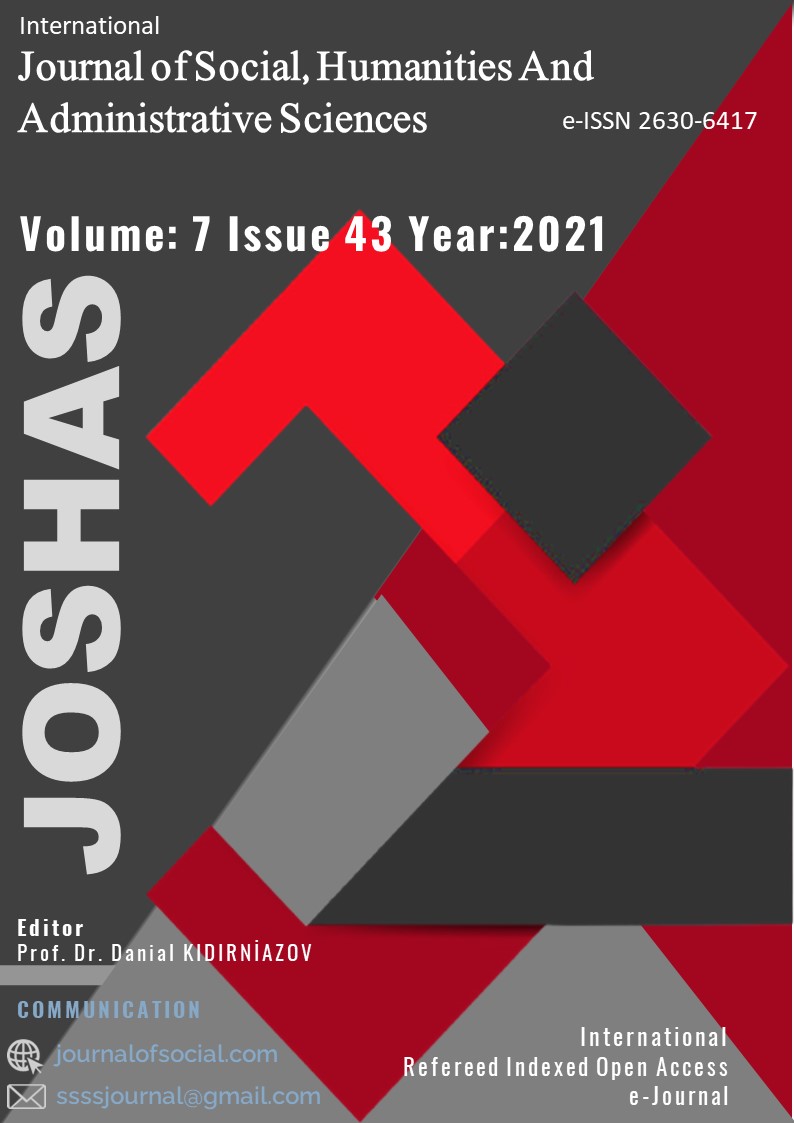Author :
Abstract
Bu çalışmada, Türkiye’de dış ticaret açığının belirleyicilerini seçili bazı makroekonomik faktörler bağlamında, 2006:Q1- 2018:Q3 dönemi için incelenmektedir. Çalışmada, dış ticaret açığı, genel bütçe harcamaları, reel GSYH, bankacılık sektörü toplam kredi hacmi, M1 para arzı ve reel efektif döviz kuruna ait veriler kullanılmıştır. Değişkenlere ait veriler TCMB Elektronik Veri Dağıtım Sisteminden (EVDS)’den elde edilmiştir. Değişkenler arasındaki eşbütünleşme ilişkisinin tespit edilebilmesi için ARDL analiz yöntemi kullanılmıştır. Elde edilen bulgulara göre, makroekonomik değişkenlerden genel bütçe harcamaları, reel GSYH ve reel efektif döviz kuru ile dış ticaret açığı arasında uzun dönemde istatistiki olarak anlamlı bir ilişki olduğu görülmektedir. Yani, uzun dönemde genel bütçe harcamaları, reel GSYH ve reel efektif döviz kuru yükseldiğinde, dış ticaret açığının da artırdığı anlaşılmaktadır. Diğer taraftan, kısa dönemde, dış ticaret açığının, reel GSYH ile tüm dönemlerde, M1 para arzı ile sadece M1(-1) döneminde, reel efektif döviz kuru ile de sadece düzey değerinde istatistiki olarak anlamlı bir ilişki içerisinde olduğu belirlenmiştir.
Keywords
Abstract
In this study, the determinants of the foreign trade deficit in Turkey are examined in the context of some selected macroeconomic factors for the period 2006:Q1- 2018:Q3. In the study, data on foreign trade deficit, general budget expenditures, real GDP, total credit volume of the banking sector, M1 money supply and real effective exchange rate were used. The data of the variables were obtained from the TCMB Electronic Data Distribution System (EVDS). ARDL analysis method was used to determine the cointegration relationship between the variables. According to the findings, it is seen that there is a statistically significant long-term relationship between macroeconomic variables, general budget expenditures, real GDP and real effective exchange rate, and foreign trade deficit. In other words, when the general budget expenditures, real GDP and real effective exchange rate increase in the long run, it is understood that the foreign trade deficit also increases. On the other hand, in the short run, it has been determined that the foreign trade deficit has a statistically significant relationship with real GDP in all periods, with the M1 money supply only in the M1(-1) period, and with the real effective exchange rate only at the level value.
Keywords
- Adıgüzel, U. (2014). “Türkiye’de kamu harcamaları dış ticaret açıkları üzerinde etkili mi?”, Akademik
- Adıgüzel, U. (2014). “Türkiye’de kamu harcamaları dış ticaret açıkları üzerinde etkili mi?”, Akademik Araştırmalar ve Çalışmalar Dergisi , 6(10), 39-55.
- Akbostancı, E., & Tunç, G. İ. (2001). “Turkish twin deficits: an error correction model of trade balance”, ERC- Ekonomik Araştırma Merkezi,01-06 Mayıs, Orta Doğu Teknik Üniversitesi, Ankara.
- Akçayır, Ö. & Albeni M. (2016). “Türkiye’de kredi genişlemesinin cari açığa etkisi: sınır testi yaklaşımı”, Çankırı Karatekin Üniversitesi İktisadi ve İdari Bilimler Fakültesi Dergisi, 6(1), 557-583.
- Akel, V.& Gazel, S. (2014). “Döviz kurları ile BIST sanayi endeksi arasındaki eş bütünleşme ilişkisi: Bir ARDL sınır testi yaklaşımı”, Erciyes Üniversitesi İktisadi ve İdari Bilimler Fakültesi Dergisi, 44, 23-41.
- Ata, A. Y. & Yücel, F. (2003). “Eş-Bütünleşme ve nedensellik testleri altında ikiz açıklar hipotezi: Türkiye uygulaması”, Çukurova Üniversitesi Sosyal Bilimler Enstitüsü Dergisi, 12(12), 97-110.
- Bozkurt, H.Y. (2013). Zaman Serileri Analizi, Genişletilmiş 2. Baskı, Bursa: Ekin Yayınevi.
- Dağ, M. & Kızılkaya, F. (2019). “Türkiye’de dış ticaret açığı sürdürülebilir mi? Ekonometrik bir analiz”, Journal of Yasar University, 14 (Special Issue), 148-153
- Dickey, D.A. & Fuller, W.A. (1981). Likelihood ratio statistics for autoregressive time series with a unit root. Econometrica Journal of the Econometric Society, 49 (4): 1057-1072.
- Pesaran M.H., Shin, Y. & Smith, R.J. (2001). “Bounds testing approaches to the analysis of level relationships”, Journal of Applied Econometrics, 16 (3): 289–326.
- Seyidoğlu, H. (2009). Uluslararası İktisat Teori Politika ve Uygulama (Geliştirilmiş 17. Baskı). İstanbul: Güzem Can Yayınları No:24. 866s.
- Utkulu, U. (2001). “Türkiye’de dış açıkların belirleyicileri: ekonometrik bir inceleme”, Dokuz Eylül Üniversitesi İktisadi İdari Bilimler Fakültesi Dergisi, 16(2): 113-132.
- Yapraklı, S. (2010). “Türkiye’de esnek döviz kuru rejimi altında dış açıkların belirleyicileri: sınır testi yaklaşımı”, Ankara Üniversitesi SBF Dergisi, 65 (4). 141-164.
- Yılmaz, Ö. & Akıncı, M. (2011). “İktisadi büyüme ile cari işlemler bilançosu arasındaki ilişki: Türkiye örneği”, Atatürk Üniversitesi İktisadi ve İdari Bilimler Dergisi, 15(2), 363–377.
